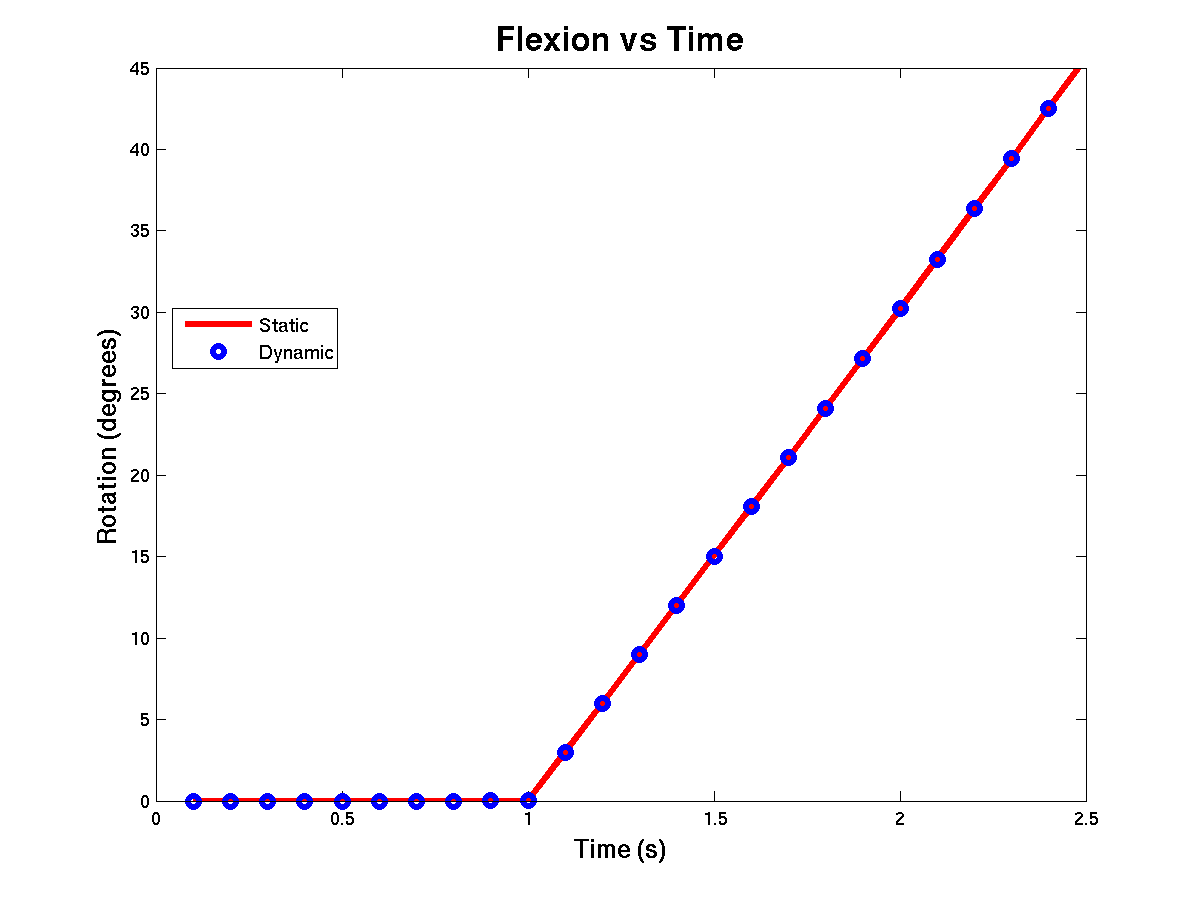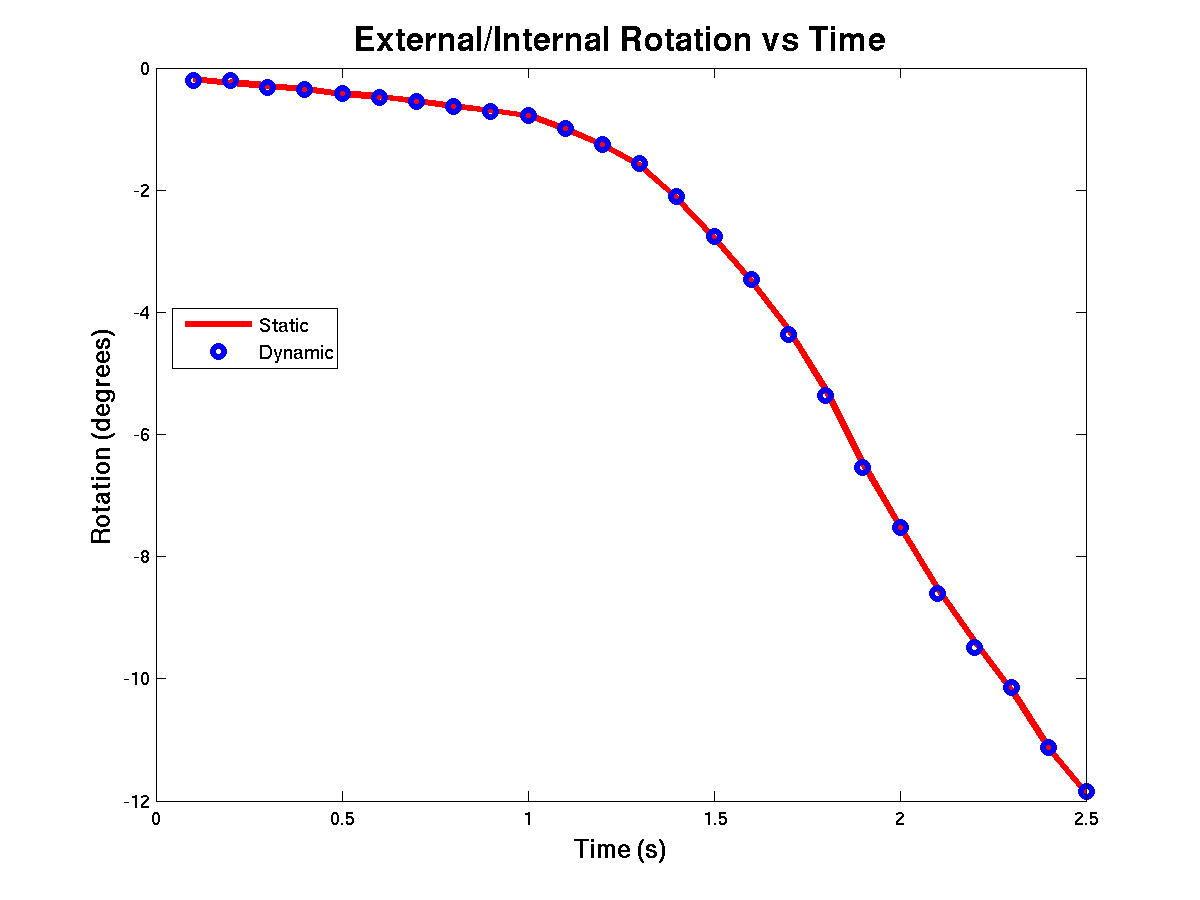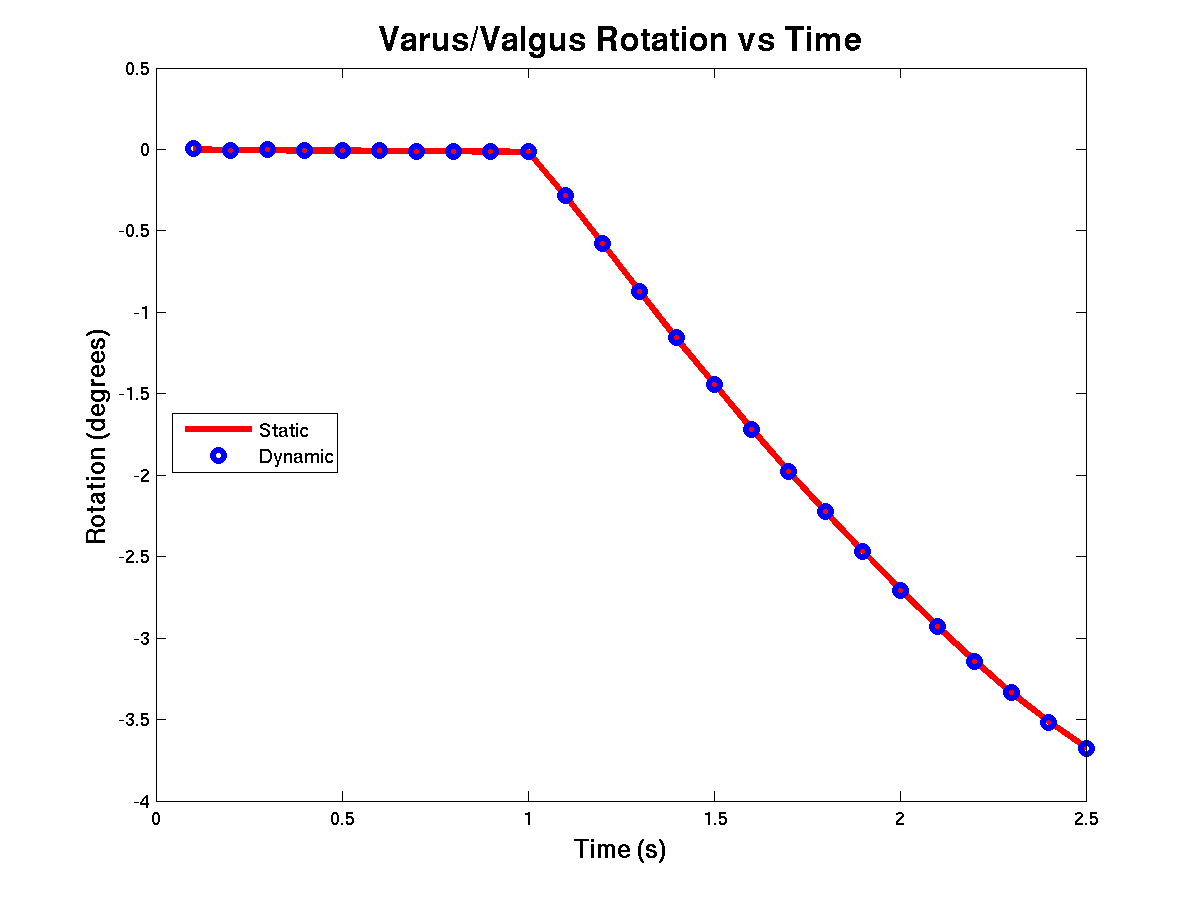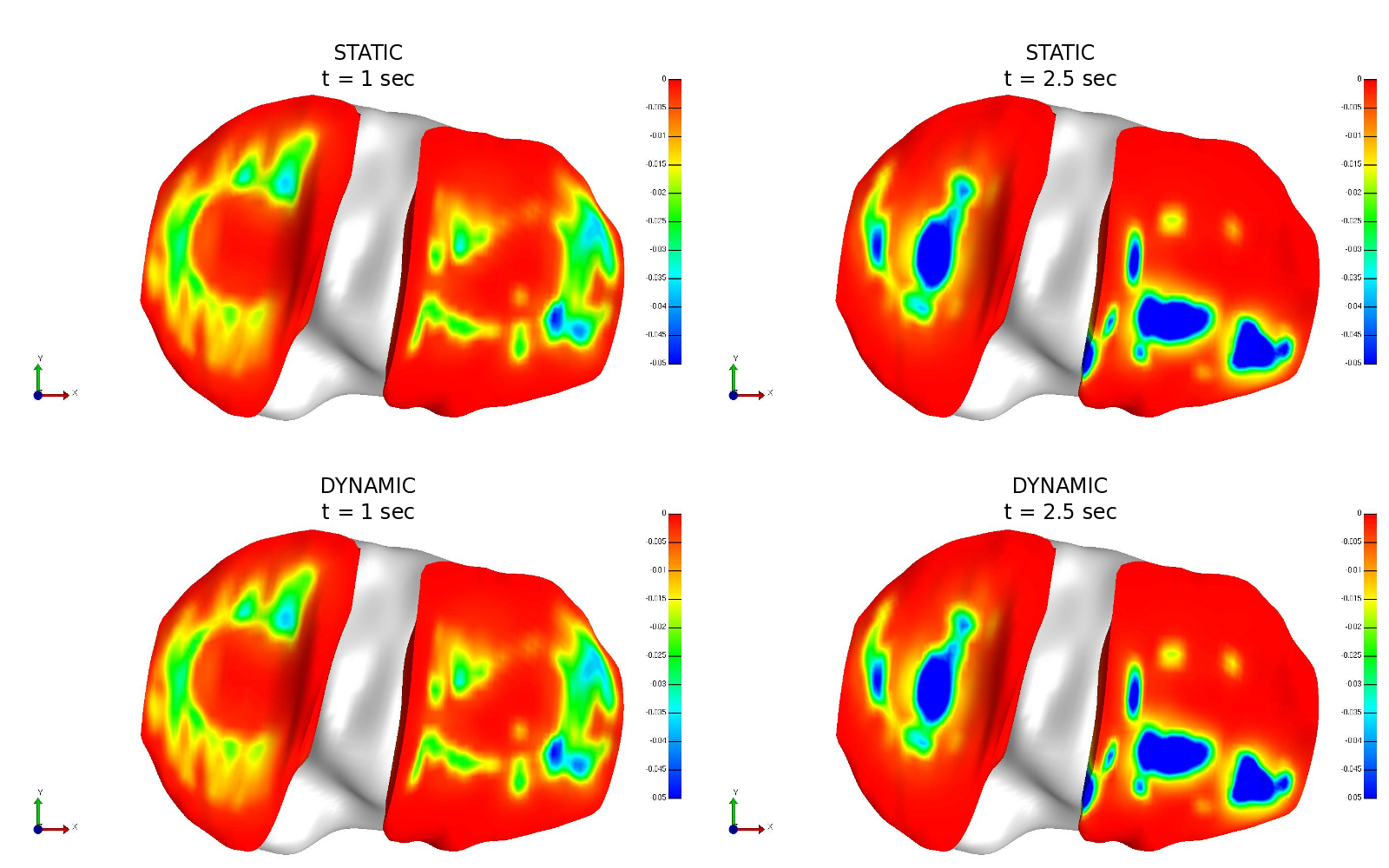Passive Flexion
A predictive model of passive flexion of the knee to 45 degrees. All materials and contact interactions are the same as described on the wiki frontpage.
Loads and Boundary Condtions
|
Tibia |
Femur |
x |
0 |
free |
y |
0 |
free |
z |
0 |
-100 N ramp t=0-1sec; constant t=1-2.5sec |
Rx |
0 |
0 deg t=0-1 sec; 45 deg t=1-2.5sec |
Ry |
0 |
free |
Rz |
0 |
free |
Platform
Employed 8 threads on Ohio Supercomputing Center's Glenn cluster - 1 node; 2 quad core 64 bit AMD Opterons; Linux.
Results
The model converged with a solution wall clock time of 32:44:25. The equivalent model in dynamic analysis on 8 threads took 10:17:39. The static model took approximately 218% longer to solve.
Kinematic Comparison
The static and dynamic models exhibited essentially identical kinematics as seen in the following plots.
Flexion

Internal/External Rotation

Varus/Valgus Rotation

Stress/Strain Comparison
Likewise, stress, strain, and contact pressure distributions were also nearly identical. A comparison of contour plots of the 3rd principal strain and contact pressure for the tibial cartilage are shown below.
Third Principal Green-Lagrange Strain (Pure Compression)

Contact Pressure
